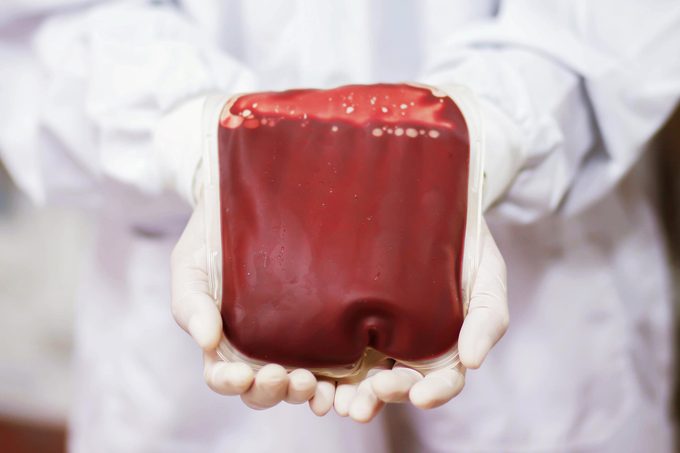Why Type O Is the Most Common Blood Type
The most common type of blood is being overtaken by other types. But all types are in huge demand—which is why everyone needs to donate!
You have a blood type
And it’s based on antigens, which are proteins or combinations of sugar called polysaccharides. They sit on the surface of red blood cells and help determine blood types. First, A or B antigens (sugars) create the four blood groups: A, B, AB, and O. The presence of Rh factor (protein) adds a “positive,” while the absence of it adds “negative.” That leads to the eight common blood types: positive, and negative versions of A, B, O, AB. What you may not realize is that there are rare blood types. Specifically, more than 600 antigens make up 200 “minor blood groups,” according to the International Society of Blood Transfusion.
Why it matters
Not just any blood will do if you need a transfusion: If a blood type doesn’t match yours or isn’t compatible, then you could get extremely ill. The immune system reaction to incompatible antigens can lead to serious complications, including kidney disease, low blood pressure, clotting, and even death, says Ross Herron, MD, chief medical officer of the Western Division of the American Red Cross. One place where your blood type may not really matter is when it comes to the controversial blood-type diet.
O is the most common blood type
About 39 percent of Canadians have O-positive blood, and just 7 percent have O-negative. Although type O comes from a recessive gene—if one parent has A or B blood, the child will be A or B—O is the oldest type, reports the BBC. A and B types only emerged in the last 20,000 years or so, and are still spreading. This underscores the need for a variety of donors, says Dr. Herron: “We need a diverse population of blood donors to make sure we have the right mix when we need it.”
The universal blood type
If you have O-negative blood, your blood is universal. O-negative can be transfused to patients with any blood type. In medical TV shows, you might see someone wheeled into the ER, and the doctor ordering “O-negative blood stat!” However, in real life, it’s starting to play out a bit differently, says Dr. Herron. “That almost always leads to O-negative blood shortages,” he says. Today, if you’re an adult male or a female beyond reproductive age, most ERs will now give you O-positive blood, says Dr. Herron, which will work and helps ease the demand for O-negative.
You’re part of the team
If have O-negative blood and you’ve donated before, you probably get regular calls from the blood donation center. “We will call up these donors and say ‘you’re part of the trauma team, we need you to donate!’ Many people come in from these recruitment efforts,” says Dr. Herron.
Should you know if you’re type O?
There are reasons you might want to know your type—especially because it can clue you into aspects of your health and whether you’re at risk for certain medical conditions.
But perhaps the most important reason to know your type is that approximately one in two Canadians will need a blood transfusion at some point in their life. Donate and you’ll be given a donor card printed with your blood type (no more forgetting). One of the best ways to help is to become a regular donor. You can donate up to six times a year—Dr. Herron considers anyone who does this a “regular.” Remember that hospitals need all types of blood—not just type Os—and that the demand is constant, not just following an emergency or tragedy. “We need donations from all blood types at all times of the year,” he says.
Some of the most enthusiastic donors are older adults who are now aging out: “We’re looking for a new generation of donors to come in with the same passion for helping their community,” adds Dr. Herron. And now that you’re aware of the most common blood type, it’s time to read up on the 10 most common types of cancer in Canada.





